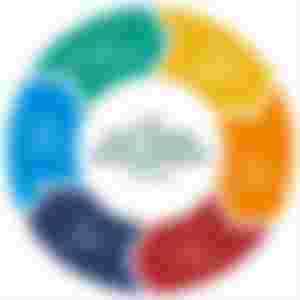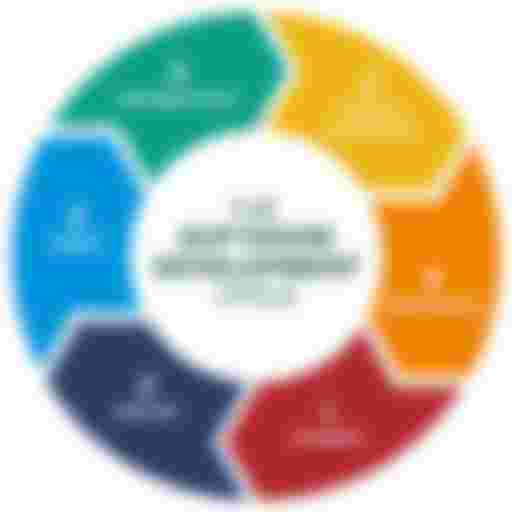Apart from the hardware tools that software technologies use, there is also the software category that runs the software business. This intangible category would surely include Database Managers – software applications that are specifically designed to store digital, computerized data.
Learning About Database Management Systems
Database software are said to have evolved from spreadsheet programs. It first started with VisiCalc, the first office productivity accounting software, built during the late 1970s. Years later, with the emergence of Excel, spreadsheet technology was popularized even more.
Not content with the power of spreadsheets, programmers and software engineers designed an even more powerful software tool – Database Management Systems. Microsoft’s Excel is already partnered with MS Access – an information management tool packaged along with other tools in MS Office.

It turned out however, that Access isn’t a very powerful database software, that’s why not too many professionals are opting to use more powerful ones like Oracle and those that are included in powerful programming languages like Java and Python.
With the ease and comfort that today’s database management software applications are giving, it is really safe to say that programmers are almost not needed anymore except in making complex programs for more challenging computer tasks.
Database software programs will always be relevant to software frameworks, that’s why anyone who wishes to be profitable with the business needs to know a thing or 2 about database management systems.
Learning About Programming Languages
Any software application regardless of the category to where it might fall could never exist at all, if it’s not fashioned using a Programming Language. PLs, as they are abbreviated, are without a doubt, the most important software of all. Without them, no operating system, mobile app, video game, website, or almost any virtual creation you can think of would ever exist.
For that reason, software creators constantly sharpen their coding skills using the best programming languages around. For them, as well as all the aspiring programmers out there who wish to be profitable with coding as a means of living, the following PLs would be the most ideal ones to learn about:

C++ – This one is known as the father of all the great PLs of today. Created by Bjarne Stroustrup, it has the power of app development, object-oriented programming, and assembly language all rolled into one. With the wide array of tools and libraries at its disposal, C++ was able to etch itself as the most important programming tool during the earliest days of the microcomputer revolution.
Java – Known as the most powerful offspring of the C programming language series, this one will be forever known as the PL used in creating most of the most popular mobile and video games you can name. But that’s only a minor milestone for Java. It is actually responsible for the creation of many of the web-based applications during the mid-2000s.
Python – By addressing many of the shortcomings that its predecessors weren’t able to handle, this one is now the PL of choice for various professionals all over the world. Whether it is web-programming, mobile gaming, mobile app development, or AI enhancement, any field of programming discipline can be efficiently handled by Python today.
Since these 3 programming languages are the most powerful in existence, most software creators use them to develop their existing systems or create new ones. For every programming endeavor, the following stages would have to be present:
Edit – is where the coding process takes place. This is where the programmer literally keys in the commands, syntaxes, and statements needed by the computer so it can perform its tasks.
Compile – is when the code entered by the programmer is being loaded into memory so it can be executed.
Execute – is when the program finally runs. The programmer will then test its functionality by feeding in the right or erroneous inputs so the next set of actions can be performed. If the ideal output isn’t yet attained, the programmer will then repeat the 3 phases, until the results are satisfactory.
It is important to understand that PLs need another important component in itself so the codes keyed in will be processed and executed. Such a component is called a “compiler.” During the earliest days of computer programming, PLs and compilers are separate entities. This means that a programmer needs to use a separate software tool apart from the text editor window he uses to type his actual code.
The code he created will then be processed on the application window of a compiler so it can be actually executed. Today, however, such a setting is no longer the norm. All PLs now are already equipped with a built-in compiler that all the programmer needs to do is just click on a button and the compiling process will instantly begin.

Such a process is totally seamless now that the young programmers of today couldn’t differentiate a PL from a compiler at all. With the latest breakthroughs of software programming today, compilers are packaged along with application publishers as well that once a programmer is finally satisfied with his creation, he can then launch it into cyberspace on the fly.
With programming publishing tools offered by the likes of Java Creator Studio, Swift, and of course, Python, making various applications including software technologies, and database systems can now be done by anyone even without high-level college degrees.
Speaking of which, it is the beauty of becoming a database administrator or a proficient computer programmer -- you don't have to attain a 4-year course. All you need to have is the guts and the analytical will to start learning.



Are you an IT or CS student or professional? I know programming and database management. I have tried different kinds of DBMS for creating SQL statements. I love to do database modeling! IDEs are really helpful right now because you can create applications easily .